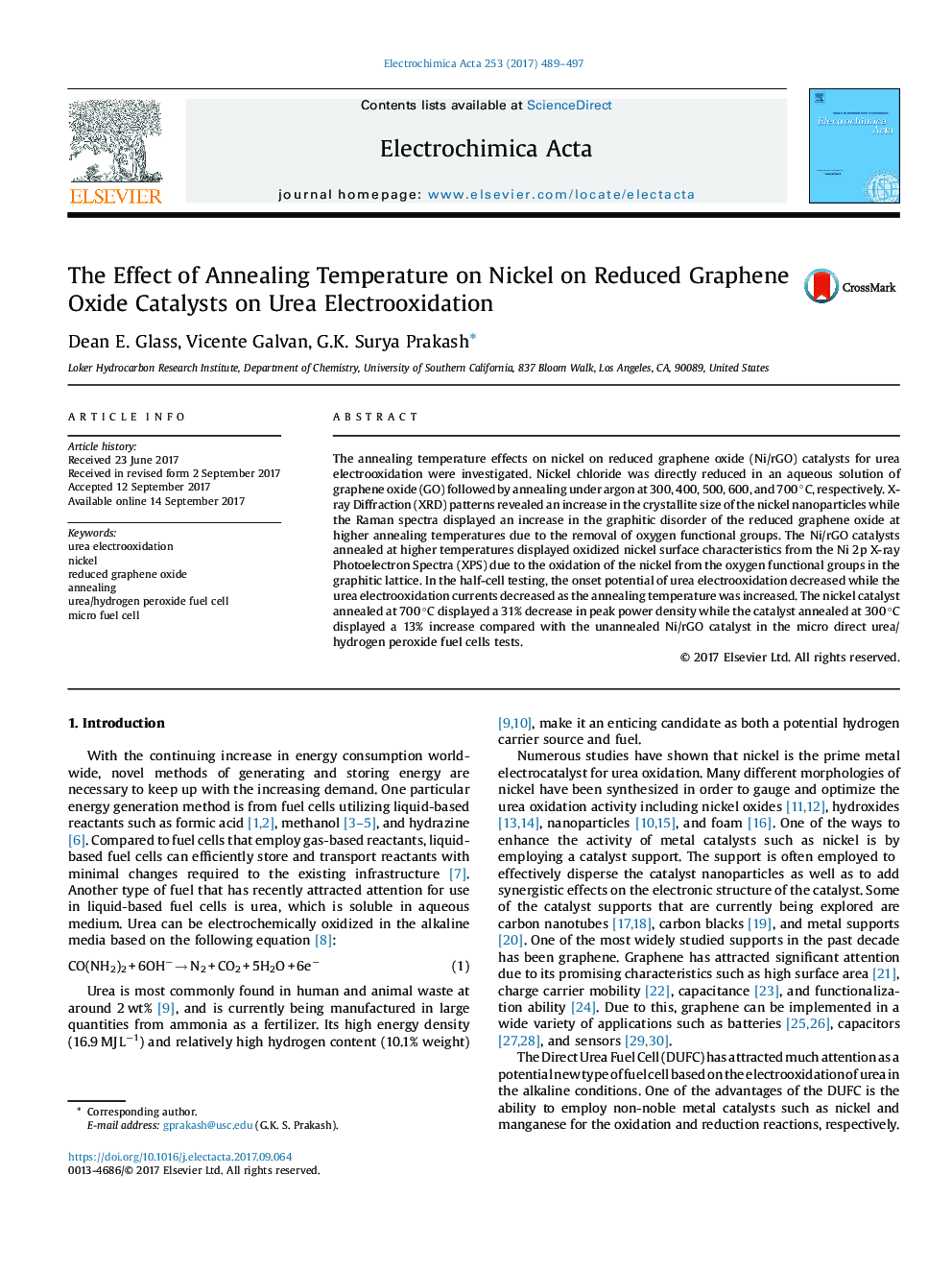| Article ID | Journal | Published Year | Pages | File Type |
|---|---|---|---|---|
| 6470177 | Electrochimica Acta | 2017 | 9 Pages |
â¢Nickel was reduced on graphene oxide and annealed under argon from 300 to 700 °C.â¢Nickel was oxidized from the removal of oxygen groups on the graphene oxide.â¢Higher annealed catalysts displayed decreased urea electrooxidation currents.â¢Micro direct urea/hydrogen peroxide fuel cells were employed for the first time.â¢Ni/rGO catalysts displayed enhanced fuel cell performance than the bare nickel.
The annealing temperature effects on nickel on reduced graphene oxide (Ni/rGO) catalysts for urea electrooxidation were investigated. Nickel chloride was directly reduced in an aqueous solution of graphene oxide (GO) followed by annealing under argon at 300, 400, 500, 600, and 700 °C, respectively. X-ray Diffraction (XRD) patterns revealed an increase in the crystallite size of the nickel nanoparticles while the Raman spectra displayed an increase in the graphitic disorder of the reduced graphene oxide at higher annealing temperatures due to the removal of oxygen functional groups. The Ni/rGO catalysts annealed at higher temperatures displayed oxidized nickel surface characteristics from the Ni 2p X-ray Photoelectron Spectra (XPS) due to the oxidation of the nickel from the oxygen functional groups in the graphitic lattice. In the half-cell testing, the onset potential of urea electrooxidation decreased while the urea electrooxidation currents decreased as the annealing temperature was increased. The nickel catalyst annealed at 700 °C displayed a 31% decrease in peak power density while the catalyst annealed at 300 °C displayed a 13% increase compared with the unannealed Ni/rGO catalyst in the micro direct urea/hydrogen peroxide fuel cells tests.
Graphical abstractDownload high-res image (238KB)Download full-size image
